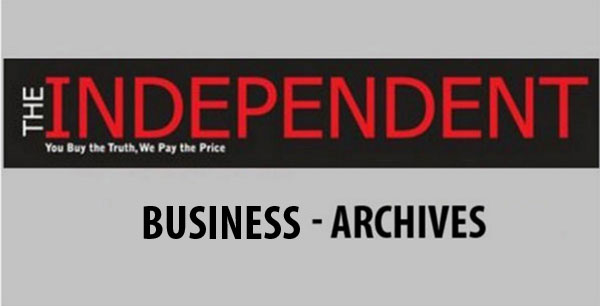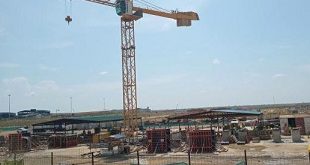
By Peter Nyanzi
Selestino Babungi was recently appointed the first Ugandan CEO of power distributor Umeme. He spoke to Peter Nyanzi about their operations, current performance, and other pertinent issues in the energy sector. Excerpts
What key aspects of your personal leadership philosophy have brought you this far?
I am driven by results that are delivered ethically with integrity. I am a firm believer in people – developing them to deliver results. I also thrive on happy customers because when you have happy customers your stakeholder relations greatly improve.
Accountants are becoming quite popular as CEOs. Why could this be so?
It’s a worldwide trend. The world has realized that accountants are not just bean counters; they are good for business. They understand the mechanics of the business. Worldwide, we are seeing finance professionals coming to the table to drive not just the bottom line but corporate strategy also.
What is Umeme’s investment strategy in 2015?
As a company, we set out to reduce energy losses, improve customer service, expand the network, and to increase access from the current 15% to 40% by 2025 in line with the government agenda. Our five-year investment strategy (2013-2018) has prioritized those areas. We plan to invest close to $440m (about Shs 1 trillion) over this period. Last year we invested Shs 269 billion in the areas that I have highlighted.
Are you intending to push your predecessor’s strategy or you have your own agenda?
Charles Chapman came to turn around the company – it is now listed on the USE, it is bankable, it has attracted $190m dollars in private capital. We are now moving towards strengthening the network. Technology will be key. Currently, 30% of our customers are on pre-paid metering and we want to move towards 100% by 2018. Secondly, we want to raise the caliber of our staff to train them with the aim of making them responsive to the needs of stakeholders. So, we are on a growth trajectory that requires a completely different agenda.
On a scale of 1-10, how would you rate the performance of Umeme as a concessionaire so far, and why?
We would rate ourselves highly given the targets we were given. I think Umeme has done an excellent job. We have seen other countries – Ghana, Liberia, Zanzibar, Rwanda, Tanzania – come here to study our model. This model is becoming popular with the World Bank and it is also being deployed in Cameroon. One of the targets we were given was to invest $65m in the network by 2010. By end of 2014, our total investment was $321m – almost five times the target. Then we were required to grow customer numbers to 15,000 per annum. We are now connecting 100,000 per annum. The other target was reducing power losses from 38%- 40%. Losses have come down to 21%, which I think is an enormous achievement. The other target was improving revenue collection from 70% to 80%. Last year, we achieved 99.1% revenue collection rate, which has made the sector self-sustaining.
The President has recently been complaining about expensive power despite the coming on board of Bujagali. What is your take?
Umeme has done its part and the government recognizes that our space in the tariff is about 20% only. The transmission and generation costs have the biggest impact most on the end-user tariffs. So to achieve a reduction in the end user tariff to sustainable levels, you have to address the generation and transmission components of the tariff. That is why the government is putting in capital investment into generation at new dams at Karuma and Isimba. But on the other hand, drawing from the Eskom experience in South Africa, low tariffs may not be necessarily good news in the long term as expensive investments would still be required in future as the demand continues to rise.
But is the generation growing at the same pace with demand or there is a likelihood that there could be blackouts before Isimba and Karuma come on board?
All the power we are getting is from hydro dams and bio-gas plants at Kakira and Kinyara sugar factories. Total maximum demand is at 540MW, but demand is growing at 10%. Effective generation available is about 670MW including the thermal generators though they are currently dormant. At the tail end of 2016 we might require thermal generators to support us. If Isimba and Karuma dams don’t come on stream in 2017/18, there could be a likelihood of a power availability crisis. So, it is paramount that those dams must come on stream by 2018.
But there are also concerns that Umeme’s CAPEX strategy may not be sufficient to accommodate 780MW from the two new dams. What is your take on those concerns?
Is Umeme doing enough to prepare for this power that is coming on-stream? Yes, we are because as I said we are into the growth strategy mode. Last year, we expanded Queens Way Sub-station, we built a new one in Nagongongera and completed Waligo and Lubowa substations. This year we have started on Namugongo, Luwero, Nansana and Lugazi. On all routes, all the power lines are being or have been revamped countrywide. We introduced more than 400 new transformer zones into the network. All these activities are intended to prepare for the upcoming generation from new dams.
There was a Parliamentary recommendation about terminating your contract. Aren’t you worried?
Parliament made its recommendation, which is at the discretion of the Executive arm of the government to implement. As far as we know, nothing has come to our attention with a view of starting the termination process. What we see is that the central government is very supportive of Umeme given our agenda and what we have already delivered on the table.
You have issues with the regulator, ERA, which have gone up to the Tribunal. What kind of relationship do you have with the regulator?
The dispute arose as a result of the regulator attempting to amend our licence without following the due process. Of course in our licence and the Electricity Act there are mechanisms for resolving such disputes. It is the same process that Umeme is undertaking but it does not affect our day to day relationship with the regulator. The rest let’s leave to the experts to determine because the process is still ongoing.
How has the exchange rate affected your business?
Given the nature of our business, the bulk of our materials are imported and are dollar denominated, so yes, it has affected us. It’s a global problem whereby the dollar has strengthened; even the Euro and Rand are suffering. The Bank of Uganda has done a commendable job as the rate of depreciation of the shilling is not too bad compared to other African currencies say in Ghana or South Africa.
Your profits went down in 2014. Was the exchange rate one of the factors that contributed to that reduction?
From our financials, foreign exchange losses amounted to Shs 28bn, which hit our income statement. Unrealised losses were Shs 24bn and our profitably dropped to Shs 70bn. But investors look at this as unrealized foreign exchange losses; it’s a non-cash item so they discount it out from the financial analysis.
So should we expect better performance in 2015?
I can’t promise or project better news. But all I can say is that the fundamentals are right for the business. We have a target of 18.6% for the energy losses in 2015 and revenue collection rate of 97%. We see growth in purchases running at around 5-6% and coupled with our capex last year, I think the base is right for growth but subject to how the economy performs generally.
So, as the new CEO, what is your vision?
Our business is driven by our key stakeholders especially our customers. Continuous improvement of our customer service – faster services, simplified processes, availability of quality, reliable, and safe power at all times remain on top of my agenda. The second element is people – our staff – continuously training them and focusing them on serving the customer. Then, in line with the government growth agenda, to move the connection rate from 15% to 40% by 2025 is also part of the agenda. We are also implementing a government programme for free connections, which was launched last year. So far we have hit 7,000 free connections. We are also in discussions with KFW and the World Bank for ERT III to make 1.3 million free connections in the next ten years. We want to see how to accelerate that programme.
How do you manage without the Escrow account?
We have shared with the government the consumption projections for budgeting purposes for the various ministries and government departments. Secondly, all government entities on single phase have been converted into pre-paid metering. Also, we are procuring a pre-paid metering system that can handle heavy loads, say for the whole Ministry of Finance headquarters. We believe that will ultimately be part of the solution for the high government energy bills.
 The Independent Uganda: You get the Truth we Pay the Price
The Independent Uganda: You get the Truth we Pay the Price



